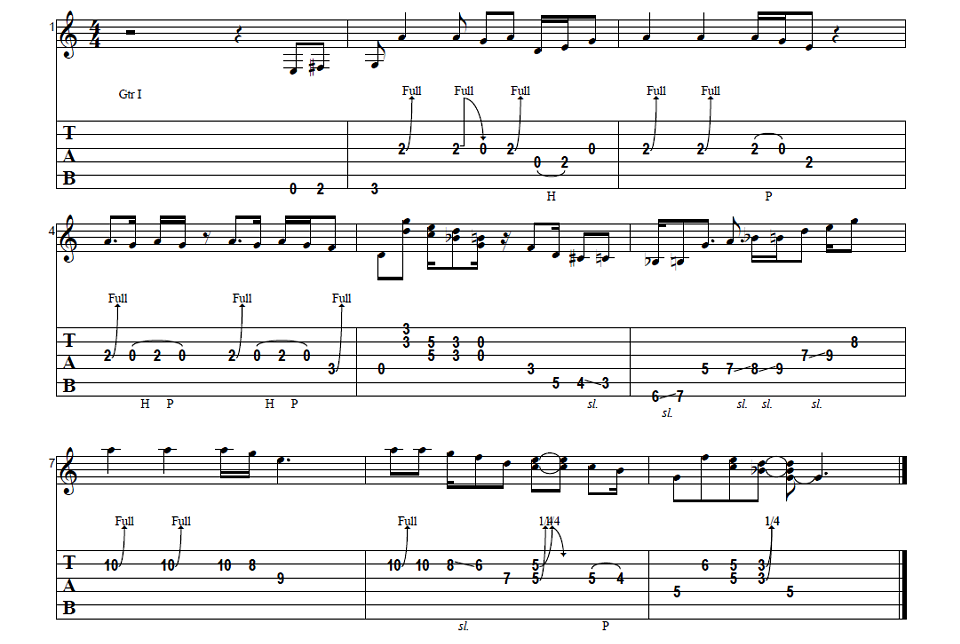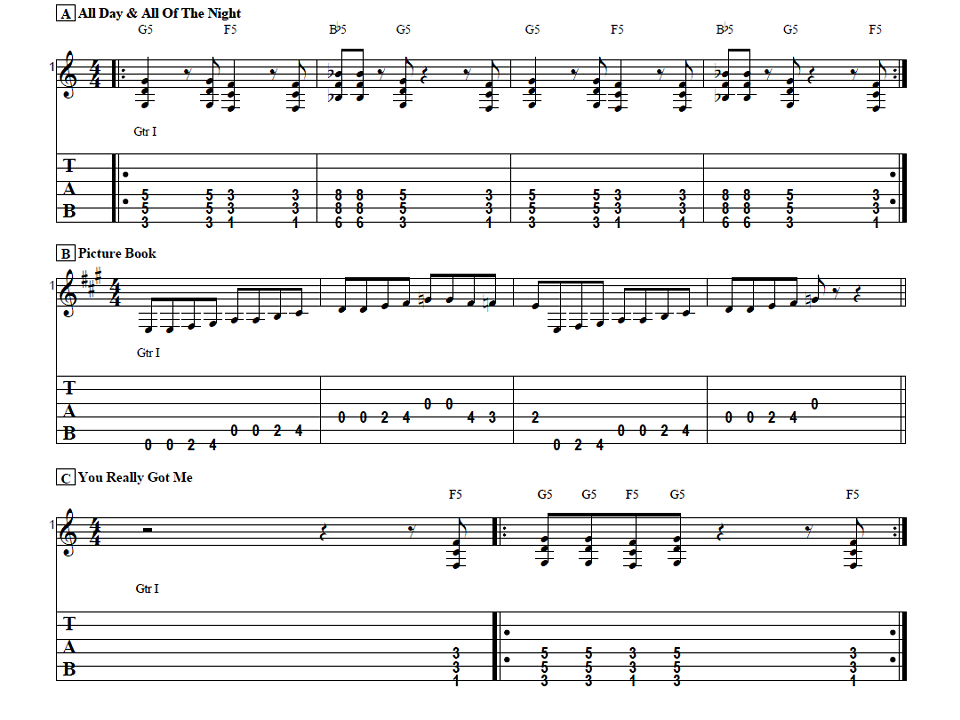Welcome back to Guitar Control. Today Uncle D has another installment in his pentatonic lick series. This time Darrin is tackling licks from the late great Jerry Reed from the solo from Eastbound & Down. These killer licks incorporate low fret bending and double stops and you will be using the hybrid picking technique. So be sure to get the free tabs to go along with the video instruction and you will rockin’ these sweet licks tonight!

Introduction
How’s it going everybody? This is Darrin with GuitarControl.com bringing this video lesson and today I want to show you how to play the first part of the guitar solo for Eastbound and Down by Jerry Reed.
So right now, Guitar Control is giving away this really awesome daily practice routine to improve your lead guitar chops. This was put together by our very own Silvio Gazquez, a two-time Guitar Idle finalist. This routine covers the four main concepts that are necessary for lead guitar; alternate picking, legato, sweep picking and tapping. All the tabs and exercises are all included in this free ebook and there’s a link in the description where you can get yours.
So be sure to click on the link in the description of the tabs and let’s get close up and take a look at this.
Jerry Reed Licks
All right, so this is actually really cool. I think it’s a lot of fun to play and this goes along with the theme we’ve been doing lately with these pentatonic sequences. So here we’re going to get some experience with using some double stops. This has bending in it that’s clear down here on the second fret and it is difficult to get these bends, but when you hear this in the song it’s coming after some pickup notes.
So that’s what I’ve got on there is that one, two, three, four and, one; so just open, two, three, and then it goes into the riff. So that part’s optional. The actual main thing for this we’re on the second fret of the G string and we’re gonna bend it a full step. Now when I’m doing this sometimes you’re going to see me pull it and other times push it. It mostly just depends on how my fingers feeling at the time. On this particular thing it doesn’t really going to matter which way you go. All right so we’ve got that first bend, it’s a full step bend. Then we’re going to do it again bend and release to the open string and then back to the second fret again with another bend. Then we’re gonna go to the D string, open hammer, to the second fret and then follow that with the open G string. So that’s the second measure in the transcription, but it’s like basically the first measure of this riff.
Okay, then starting on the next measure, measure three, we’re going to bend this again twice and then pick and pull it open and then the second fret of the G string or excuse me the D string… All right, so that’s the first three measures, the first part of the riff. And then starting on measure four we’re going to do the bend on the second fret of the G string and then we’re going to go open, hammer to two, pull to open and then it has a rest. Then do it a second time and the thing that’s different on the second time instead of having that eighth note rest you can go to the third fret on the D string… and it’s got a bend on it… Then we follow that with the whole fourth measure and then starting on the fifth measure open D string and now here’s where we’re going to get into the little double stop part.
So there’s a couple of ways that you can do this technique wise. So you hit that open D string and then we’re gonna need this double stop, this fourth dyad. So I’m just barring the third fret of the B and the high E string with my first finger and then we’re going to go to the fifth fret of the B and G string, so I use my third finger. Then we’re going to move that down to the third fret B and G string and then the G and B string open. So you can go… or you could hybrid pick it and this is more like Jerry Reed would have been playing; at least that’s what I what I believe to be true. So I’m going to pick the D string with the pick and then I’m going to use my second and third fingers to pluck the B and high E string and then use them to do the B and the G strings…
So this next part here is the most awkward part in my opinion. So after you do that and you play the open B and the G strings you have a 16th note rest there, it’s just barely a second of rest. So what you can do is move your first finger so it’s picking up the third fret of the D string and then a couple of ways that you could do this. You’re gonna go three and then you’re gonna go five on the A string and then four slide to three… So it’s kind of awkward to decide which fingers because as soon as you do that… then we’re going to come up to the sixth fret on the low E string and pick that and slide to seven…
So you know you’re gonna kind of have to work that out for yourself what you feel is the most efficient way to do that as far as fingerings… When I come up here for sure I want to use my third finger or at least my second finger because then the next note is the fifth fret on the D string… So that’s how I tend to do it, but I want to do that there so I can be ready for that because that’s moving into the next part. Okay so after we do that six slide to seven, and that is on measure six. So we do that six slide to seven, skip the A string, go to the fifth fret of the D string and then we’re gonna go to the seventh fret. So I’m going to use my third finger to go to that seven because I’m going to pick seven, slide to eight, slide to nine. The next notes are on the G string seven and nine so this way I can go… Now the next set is on the G string and it’s a slide to nine. Now normally I would probably use my first finger, but the next note is here on the eighth fret of the B string. So what I’m going to do is I’m going to use my middle finger and I’ll use my first finger there because the next thing is the tenth fret where we have to bend. So it’s all about kind of setting yourself up when you’re choosing which fingers you use to play something. Just because you see somebody else do it a certain way isn’t always going to be necessarily the best way for you to do it. So you kind of have to look when you’re figuring this out to see what’s coming in the next phrase so that way you can set yourself up. To do that you sometimes have to kind of split the difference of what you want to do versus what’s best for the segue… Now after I do that chromatic slide up from seven, eight, nine on the D string then I’m going to go to the seventh fret on the G string with my middle finger and slide to nine and then follow that with the eighth fret on the B string. I’m going to keep my first finger there on the eighth fret of the B string, but now I’m going to put my third finger on the tenth fret and then my middle finger is on the ninth so that way I can get that assisted bend. So now we’ve got two full step bends and then ten to eight, back to nine here on the G string with my middle finger. Now we’re gonna go back to 10 again and this is where we’re going to wrap it up. So we’re going to go ten, full step bend and release it and pick again. Then eight, and our first finger is already there, and then we’re gonna slide that down to the sixth fret… Then we’re gonna go to the seventh fret of the G string using my middle finger… Now I’m going to reach over and I’m going to barre to do another double stop here. I’m going to barre the fifth fret of the G and the B string and I’m going to bend that and release it and then shift my hand position back. So this is another part that’s really awkward and I’m not completely set in stone that this is the fingering that I’m going to use for it… Now I’m going to shift down a half step so my first finger is going from the fifth fret of the G string to the fourth fret and I’m going to set my middle finger on the fifth fret and we’re going to pick that and pull and then follow that with the fifth fret of the D string. Then we’re gonna go to the sixth fret of the B string so I use my middle or excuse my ring finger and then I’m going to do a double stop again on the fifth fret of the G and the B string. Then down to the third fret with a bend and then finally ending here on the fifth fret of the D string… Now the whole thing…
Conclusion
Alright, so there you have it, Eastbound and Down by Jerry Reed, by the late great Jerry Reed. So if you like this lesson be sure to give me a thumbs up and leave a comment down below if you have any questions about this or other guitar related topics. If you’ve not already done so please subscribe to the channel and hit that notification bell so you don’t miss any of the content we upload throughout the week. Well that is all I have for you today. Thanks for watching and have a great day.


